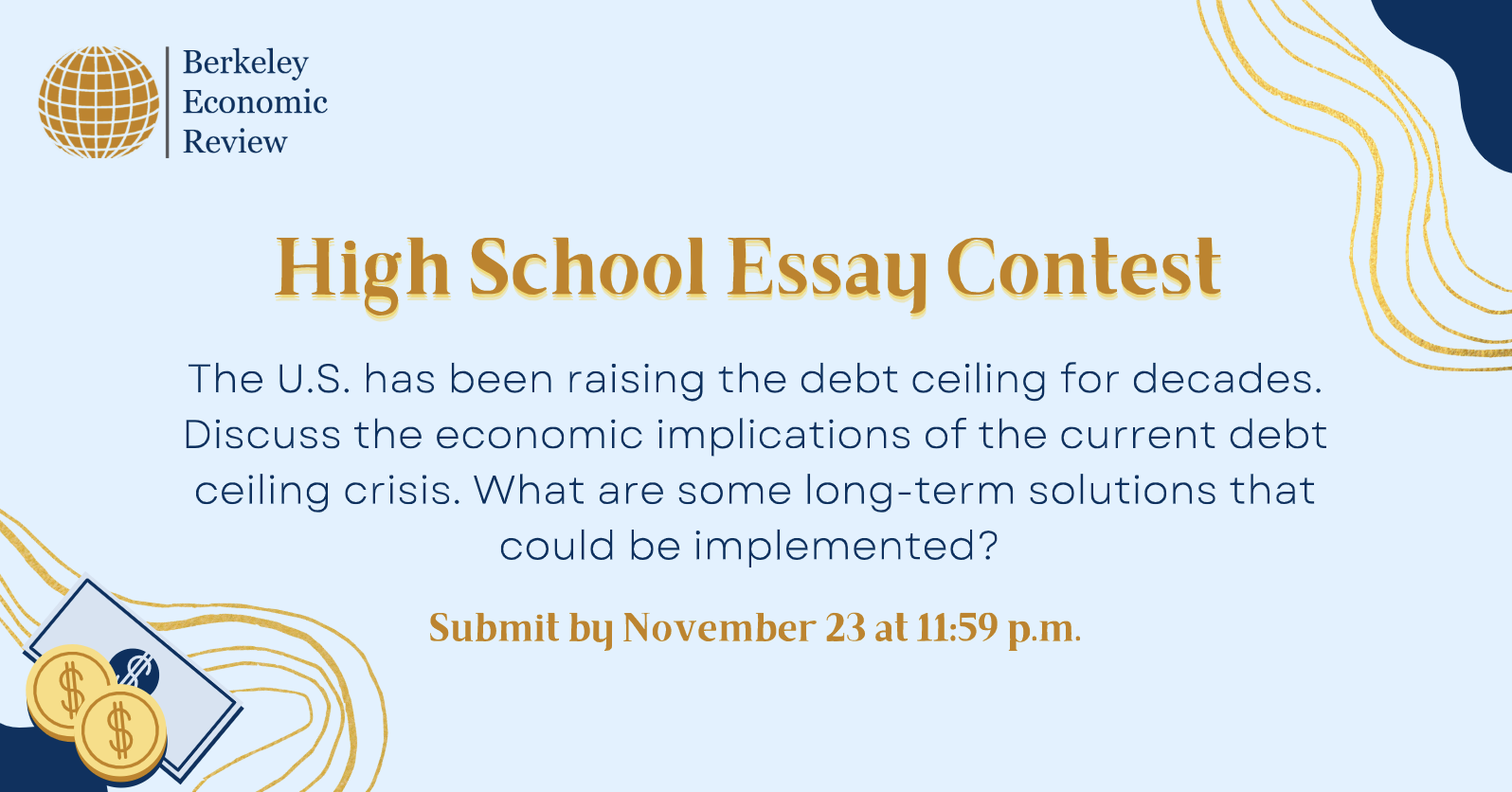Congratulations to our Fall 2021 High School Essay Contest runner up, Aditi Pavuluri!
ADITI PAVULURI – FEBRUARY 22nd, 2022
Come December, politicians will once again be faced with funding a costly infrastructure and social welfare investment plan, approving several expenditures amounting to trillions of dollars, and revisiting the age-old debt ceiling crisis. With President Biden’s plans for high-cost legislation in the near future, raising the debt ceiling is imperative to avoiding a potential recession if the US were to default on its debt. The Treasury is running out of emergency liquidity to finance its monetary obligations after the most recent suspension. The debt ceiling isn’t a good measure of the current state of the economy, it gives way to misguided policy making and political warfare, and it can cause serious damage if not lifted. Therefore, government officials must devise a solution to escape this destructive cycle – ideally, by either raising the spending limit extremely high through budget reconciliation, or by abolishing the debt ceiling altogether.
At the time of its creation, the debt ceiling was far less of a political tool than it was an economic instrument. Simply put, economic objectives such as expenditures, taxes, and borrowing were rarely subject to political controversy. The appeal of minimizing debt was a widely accepted notion, and federal spending was miniscule compared to what it is now. Conversely, the debt ceiling currently measures no comprehensive economic value, failing to be adjusted for inflation, and ignoring trillions of dollars worth of assets held by the federal government. It also only takes into account gross debt, which includes debt that the federal government owes itself. Consesquently, the debt limit doesn’t in reality stop Congress from increasing debt, merely obstsructing the Treasury from paying back its creditors and investors to whom money is owed (Stein).
Though the federal debt limit should be a representative measure of the government’s duty to pay back the excessive debt that it owes, the debt ceiling has instead become a political weapon. As the deadline to come to a consensus on whether the debt ceiling should be raised is inching closer, the constant back-and-forth between political parties is undermining the confidence that global investors have in US treasuries. Additionally, the debt ceiling argument has had debilitating effects on the economy following recessions. For example, following the financial crisis of 2008, caps on federal spending significantly hindered a successful economic recovery. An inherent lack of fiscal stimulus was issued, and a federal spending austerity ensued, causing the country’s rehabilitation to be harrowingly lengthy (Bevins). A similar pattern could be observed following the pandemic. If government stimulus were to halt due to the exhaustion of the debt allowance, it could result in a barrier to the country’s complete economic recuperation.
Though both parties agree that defaulting on financial obligations would be extremely damaging, neither party can come to a conclusion on this crisis, opting to continuously raise the ceiling, which proves to be a costly process. Treasury Secretary Janet Yellen has warned that the ongoing debt crisis could hurt the nation’s financial stability in the long run. If the debt ceiling is allowed to bind government spending in the upcoming vote, a default could be devastating to financial markets, which are still struggling to fully recover from the pandemic. Investors and banks
holding U.S. debt could fail, and the value of the US dollar would plummet. In addition to the monetary devaluation and a likely surge in inflation, the dollar could lose its spot as the “global unit of account” (Humphries). This adverse combination would create immense difficulties for the US to sustain its imports, and as a result, Americans’ standard of living would fall.
Even from an economic standpoint, the political game of “chicken” that is the debt crisis could have serious implications if not resolved. Given all of its shortcomings, the most effective solution would be to get rid of it altogether. However, for a more politically palatable solution, through budget reconciliation, Congress could also raise the debt ceiling to an arbitrarily large number. Similar to countries like Denmark, this would effectively abolish it. Similar to the Danish, Congress should raise the debt ceiling to a level high enough that it isn’t of any concern in the foreseeable future. With the decision regarding the debt ceiling looming closer, and the ability to solve the debt crisis once and for all, Congress and the Biden administration should do future politicians a favor – solve the crisis before it does any further damage.
Disclaimer: The views published in this journal are those of the individual authors or speakers and do not necessarily reflect the position or policy of Berkeley Economic Review staff, the Undergraduate Economics Association, the UC Berkeley Economics Department and faculty, or the University of California, Berkeley in general.


